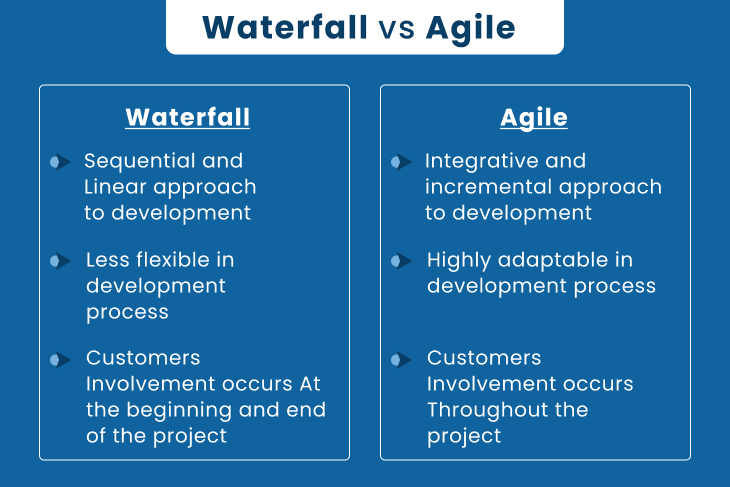We will discuss the benefits and drawbacks of Waterfall project management along with its many stages in this extensive post.
What are the 5 phases of waterfall project management methodology?
The phases of the Waterfall methodology vary from one project to another project. However, the steps of the waterfall technique may typically be divided into five categories: planning, designing, implementing, verifying, and maintenance.
- Requirements Gathering: In this initial phase, project stakeholders identify and document their requirements and objectives for the project. This involves gathering information about what the project should accomplish, defining scope, and understanding any constraints or limitations.
- System Design: Once requirements are gathered and analyzed, the system design phase begins. This phase involves creating a detailed blueprint or design document that outlines how the system will be structured and how various components will interact with each other. It may include architectural diagrams, data models, and specifications for software modules or components.
- Implementation: The implementation phase involves the actual development of the project deliverables based on the design specifications created in the previous phase. This may include writing code, designing user interfaces, configuring hardware, and integrating various components to build the final product.
- Testing: After implementation, the system undergoes rigorous testing to ensure that it meets the specified requirements and functions correctly. This includes various types of testing such as unit testing, integration testing, system testing, and user acceptance testing. Defects and issues discovered during testing are documented and addressed by the development team.
- Deployment and Maintenance: Once the system has been thoroughly tested and approved, it is deployed into the production environment or released to end-users. This phase involves installing the system, training users, and transitioning from development to ongoing maintenance and support. Maintenance activities may include bug fixes, updates, enhancements, and ongoing monitoring to ensure the system continues to meet the needs of users.
What differentiates agile from the waterfall methodology?

- Approach to Development: Waterfall methodology follows a sequential, linear approach to software development, where each phase is completed before moving on to the next phase. Whereas, agile follows an iterative and incremental approach, breaking down the project into smaller iterations or sprints.
- Flexibility: Waterfall is less flexible and adaptable to change once the project has started. Requirements are typically defined upfront and changes may be difficult to incorporate once the project is underway. Whereas, agile is highly adaptable and embraces change throughout the development process.
- Customer Involvement: In Waterfall, customer involvement typically occurs at the beginning and end of the project, with requirements gathering at the outset and user acceptance testing at the end. On the other hand, Agile encourages continuous customer involvement throughout the development process.
In short, while Waterfall methodology follows a linear, plan-driven approach with fixed requirements, Agile is iterative, flexible, and customer-focused, allowing for greater adaptability and responsiveness to change.
What is the difference between scrum and waterfall?
On the contrary, Srum employs an iterative and incremental approach. Projects are divided into short iterations called sprints, typically 2-4 weeks long. Each sprint involves a cycle of planning, execution, review, and adaptation. Features are delivered incrementally, with the most valuable ones prioritized for early delivery.
Waterfall offers less flexibility once the project begins, as changes to requirements or scope are difficult to accommodate once the design phase has started. Scrum embraces change and encourages flexibility throughout the project.
Conclusion
In conclusion, the Waterfall methodology is a structured and linear approach to project management, where requirements are gathered upfront, and each phase of the project is completed sequentially. While it offers clarity and predictability, its rigidity can make it challenging to accommodate changes late in the project lifecycle. Waterfall is best suited for projects with well-defined requirements and minimal uncertainty.

